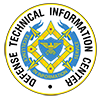Russia”s Next Military Game Changer: Microwave Weapons?
Russia will arm its sixth-generation combat drones with microwave weapons. These weapons, which disable an aircraft’s electronic equipment, already exist today “and can hit targets within a radius of tens of kilometers,” said Vladimir Mikheev, a director of state-owned Russian electronics firm KRET, in an interview with TASS. However, Mikheev suggested that microwave weapons can











